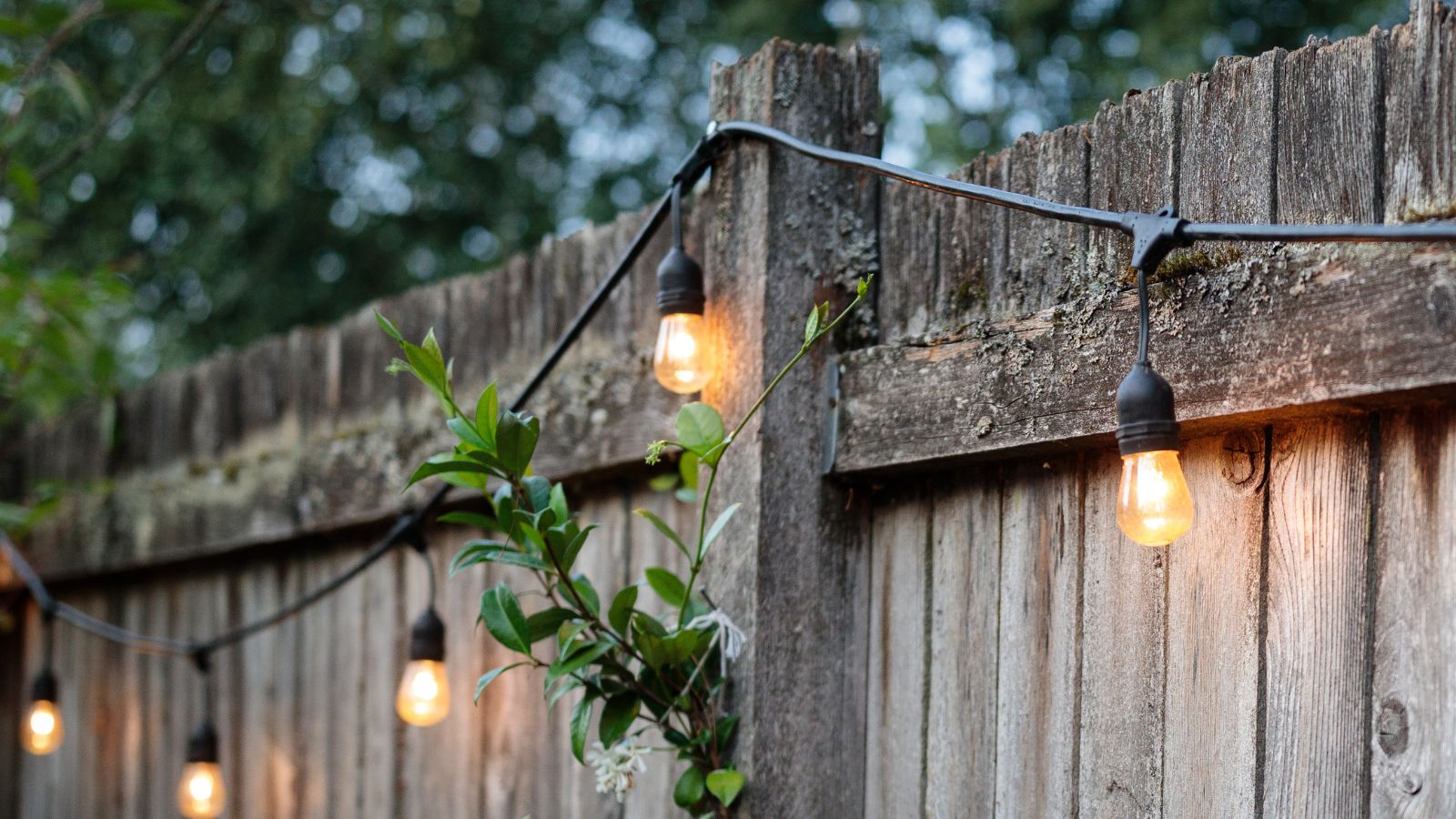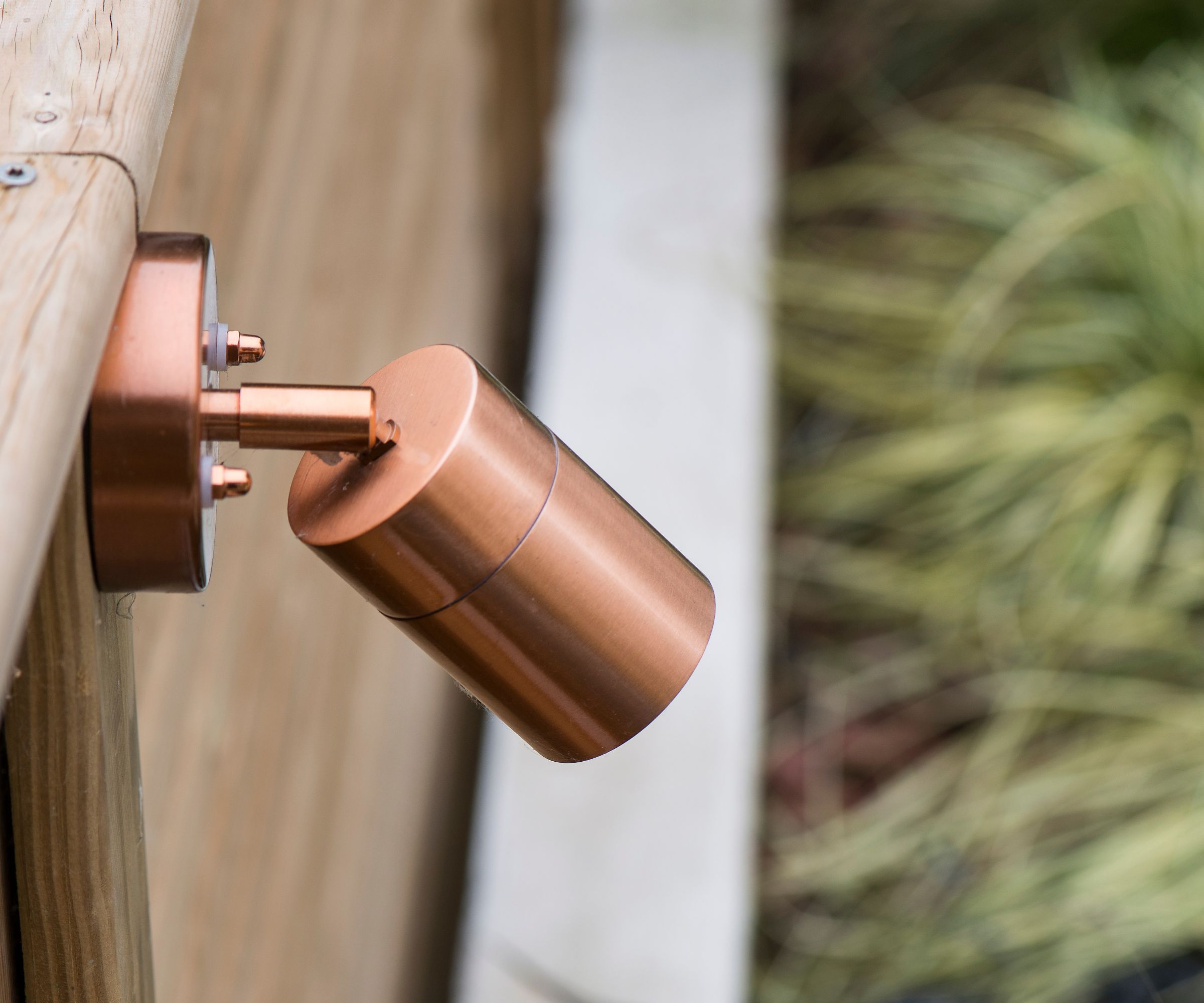How to light a fence – 5 ways to make a humble fence a little brighter
These methods of lighting a fence will bring new life to your backyard


A good sturdy fence is a garden essential. It's necessary for marking the edge of your property and for creating privacy from the neighbors.
However, fences are often one of the most boring features in the backyard. Unless you go extremely left field, your fence is plain wood or a vinyl boundary and nothing else.
That's why knowing how to light your fence is so important. Lighting your fence is a simple way to bring some panache to this garden staple and elevate it above bare necessity. These are the best ways to light a fence for both security and style.
1. Use string lights for a stylish look

String lights are the tried and tested, reliable method for lighting a fence. They're the cheapest, easiest way to illuminate your fence. All you need is an inexpensive set of string lights - wind them through the slats at the top of the fence and you're good to go. Old-fashioned faux Edison bulbs look best here, but you can achieve a subtler, more modern look with smaller LEDs.
If you have a horizontal or close-slat fence, it's still easy to install string lights. Just screw shallow screws into the wood of your fence, equal distances apart, and hang the lights from there. Lots of string light sets have fixtures included.
They look especially good if you have climbers in a fence-top lattice. The lights weave in and out of the plants and highlight any flowers long after the sun has set.
2. Build lighting into the structure of a fence
Fence post lights, also known as fence cap lights, sit on the top of fence posts, as the names suggest. These build the lighting into the structure of your fence, making it a cohesive whole rather than looking like something tacked on afterward.
Design expertise in your inbox – from inspiring decorating ideas and beautiful celebrity homes to practical gardening advice and shopping round-ups.
If you go for a solar option, fence cap lights are easy to install. Many don't even require any screwing in or hammering, and either slot over the top of the fence post or adhere on with sticky tape.
However, bear in mind that they can cause light trespass. In most municipalities, your light should only shine onto your property. If they shine into your neighbor's yard, you're committing light trespass, which can be illegal at worst and a nuisance at best. If you want to install a fence cap light on a shared fence, double-check that your neighbor is okay with it, or only use it on fences that don't back onto anyone else's land.
3. Use path lights to uplight a fence

Path lights are often a good way of lighting up a fence. They're a smart choice because they're unobtrusive. They don't highlight the fence and pick it out of the darkness, but gently illuminate it at the base, providing clear borders around the yard without it feeling boxed in.
This is an especially effective technique in planters or flowerbeds. You can use a path light to illuminate the plants in front of the fence, spotlighting your favorite varieties, with the added bonus effect of lighting up the fence.
4. Add rope lights to create a feature
Rope lights are a great way to light up a fence. Rope lights are similar to string lights but rather than an exposed wire, have lots of LEDs embedded in a transparent plastic 'rope'. This gives the illusion of a single, unbroken rope of light. The encasing also makes them more durable than string lights.
You can use these to light a fence in a couple of ways, depending on your fence. The first is to run it under the cap board at the top of the fence. This creates light that looks like it's coming out of the fence itself rather than from a visible light source.
Head of Gardens at H&G, Rachel Bull, says 'You can achieve a similar effect with a rope light laid at the base of the fence. You can hide the rope light fixture behind plants or the edge of the lawn, and use a rope light to wash the walls with diffuse light as though they're lit from nowhere.'

Rachel is a gardening editor, flower grower and floral designer. Her journalism career began on Country Living magazine, sparking a love of container gardening and wild planting. After more than a decade writing for and editing a range of consumer, business and special interest titles, Rachel became editor of floral art magazine The Flower Arranger. She then trained and worked as a floral designer and stylist in London for six years, before joining the Homes & Gardens team.
5. Mount spotlights on a fence

Spotlights are a great way to light up a fence. You can light up the whole yard with just a few features.
There are a couple of ways to achieve this look. You can downlight or uplight. Downlighting - as in the image above - is the most environmentally friendly way of lighting a fence. You mount spotlights so that that shine down the fence or highlight flowerbeds at the base.
Wildlife experts say it's important to aim your lights down at your garden. Lights shining into the sky can confuse bats and other nocturnal animals, as well as contribute to light pollution, which stops us all from enjoying the starts. It can also cause light trespass. The downside is that you can see the light fixture shining off the fence - if you look at it head on it can be painfully bright.
The other way is to uplight the fence by placing spotlights at the base. This creates a wide swathe of light across the fence for gentle but practical lighting. The downside is all of the environmental impacts.
Spotlights have the added bonus of being a good security feature. Spotlights are incredibly bright, and this can be an excellent deterrent against potential intruders.
Uplighting a fence is a great method, but it's easy to get wrong, shining bright light into a neighbor's yard. It's worth learning how to uplight a tree and applying some of the same principles, like keeping the colors warm and the brightness relatively low.

As a gardens and lifestyle contributor, Alex makes sure readers find the right information to help them make the best purchase. Alex got his start in reviewing at the iconic Good Housekeeping Institute, testing a wide range of household products and appliances. He then moved to BBC Gardeners’ World Magazine, assessing gardening tools, machinery, and wildlife products.


